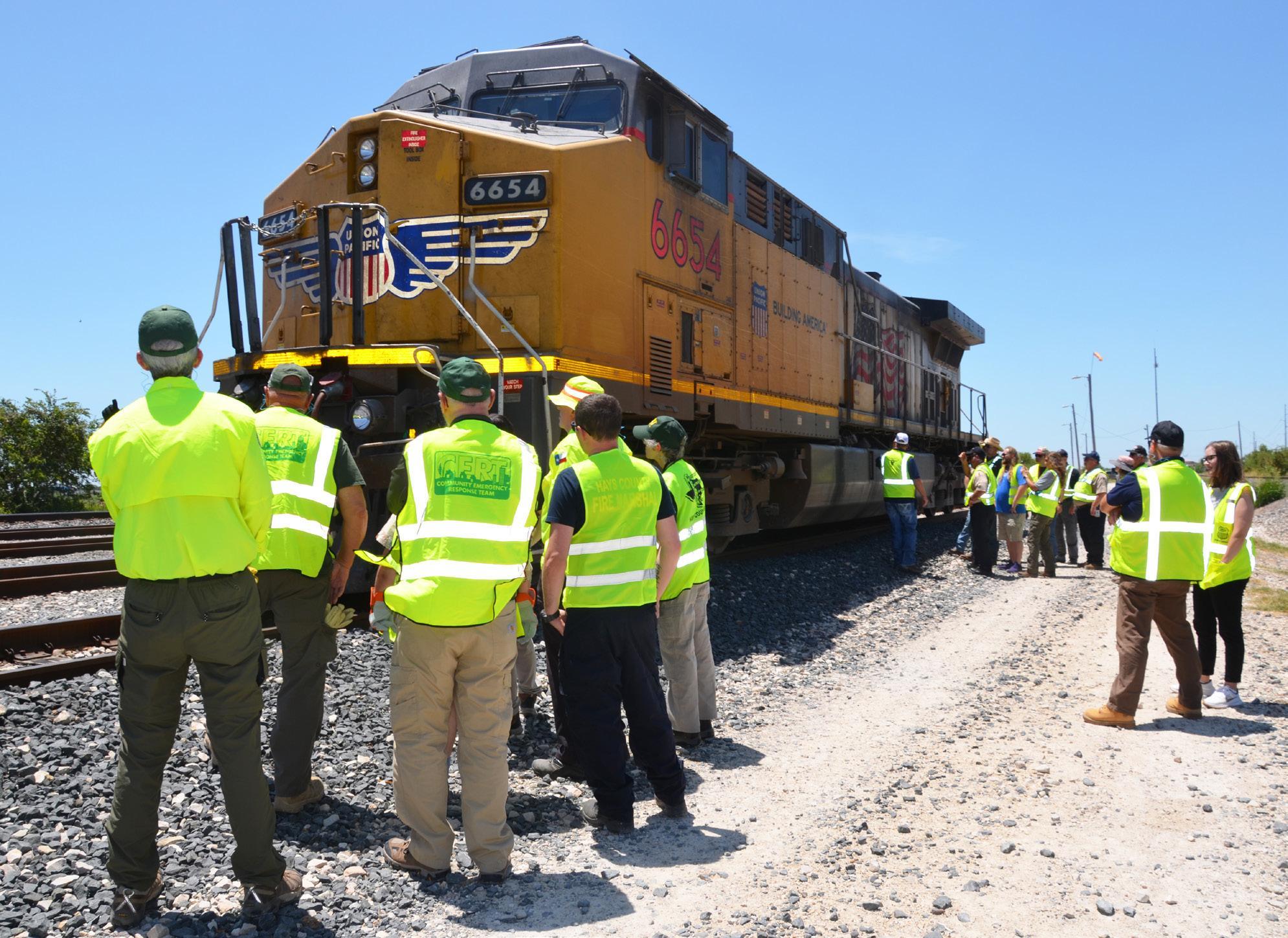
Above, out at Centerpoint Road, course participants tour a Union Pacific facility and get hands on training in railroad safety. Below, at the Hays County Public Safety Building, the written test is graded.
Daily Record photos by Barbara Audet
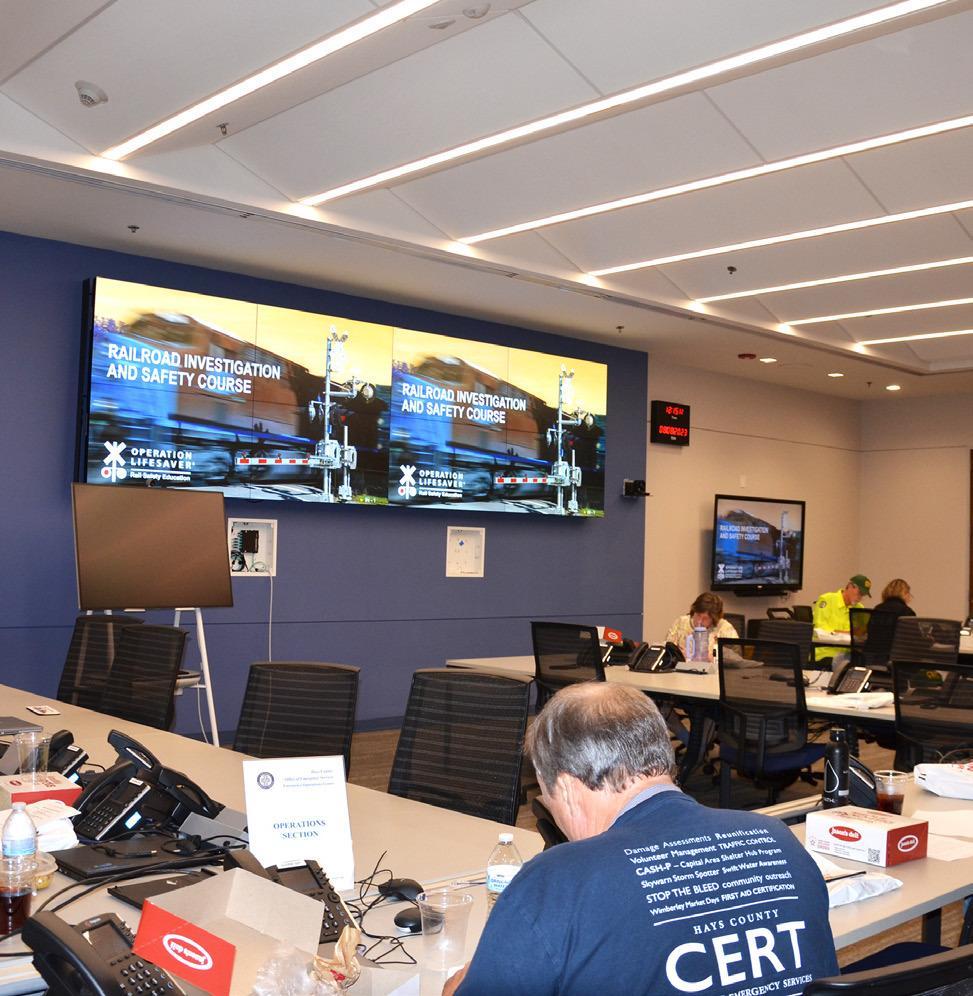
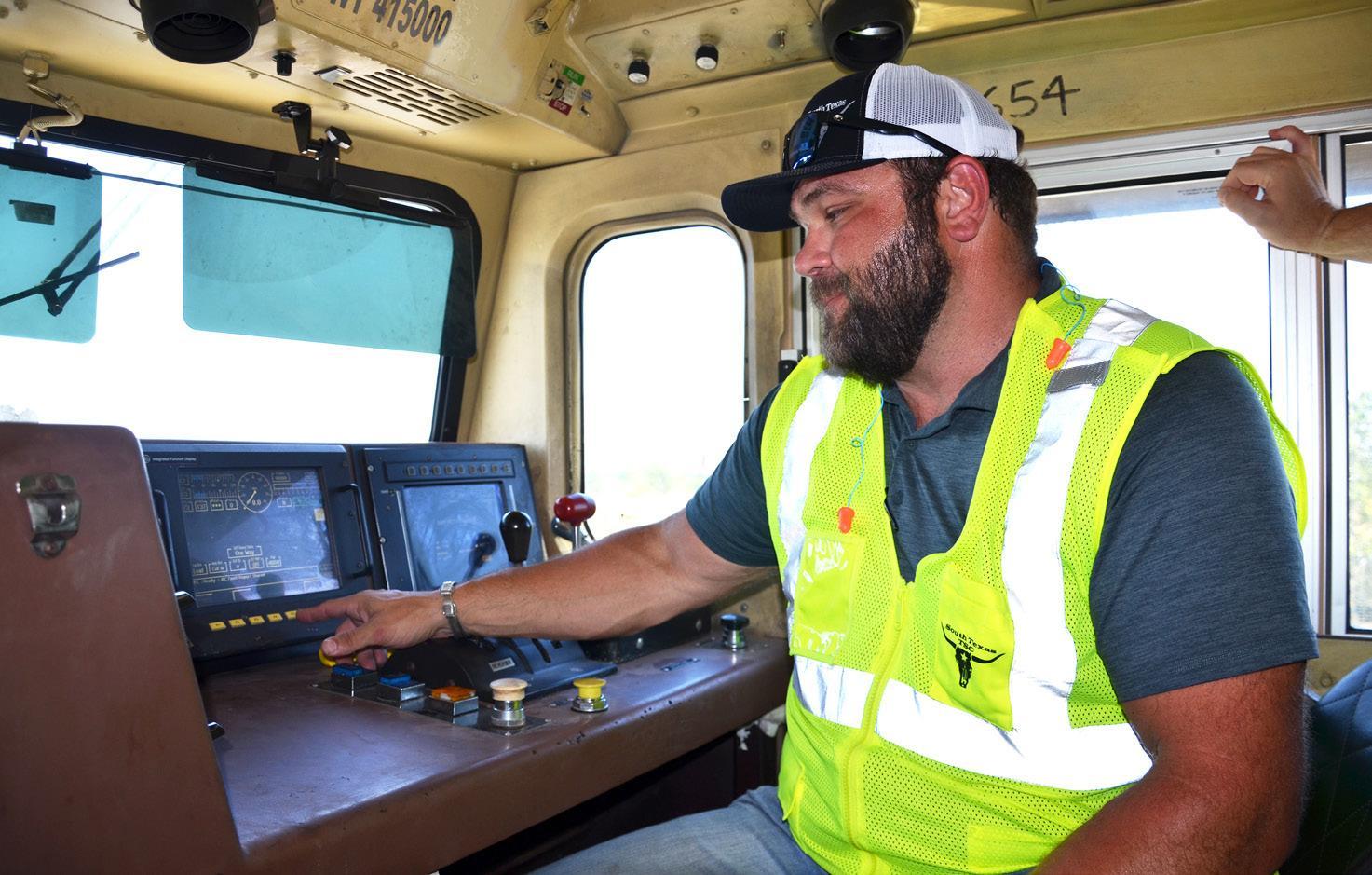
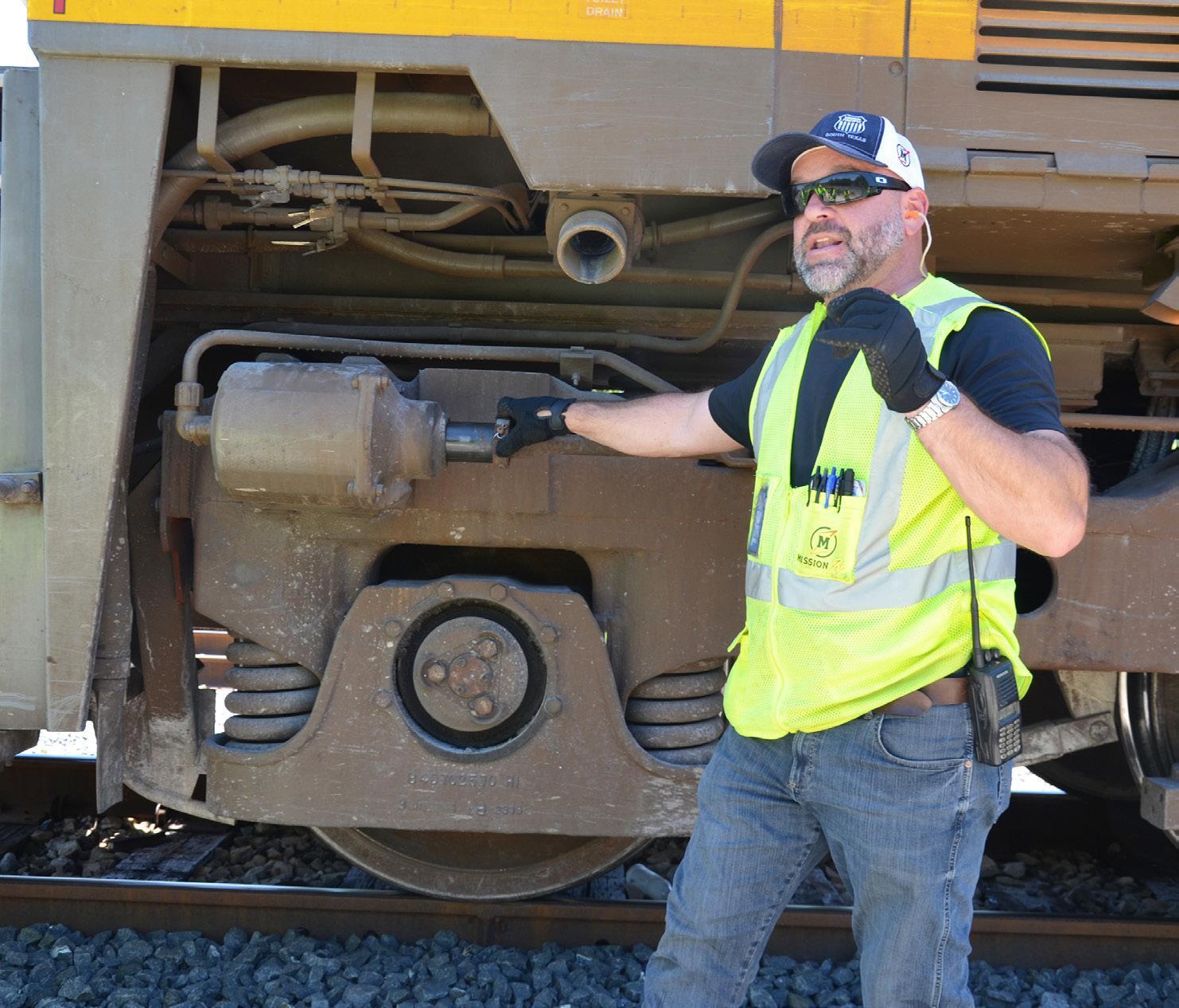
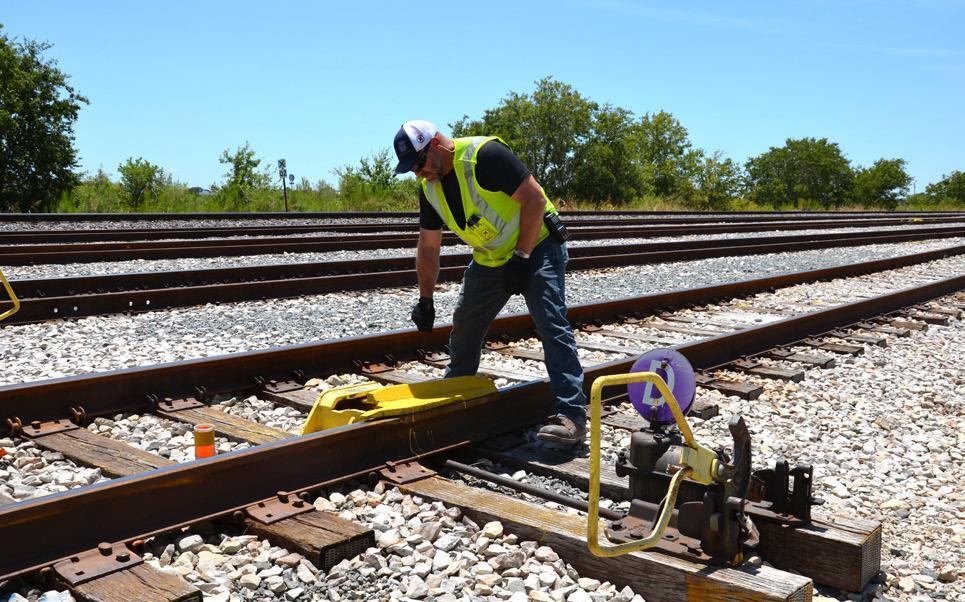
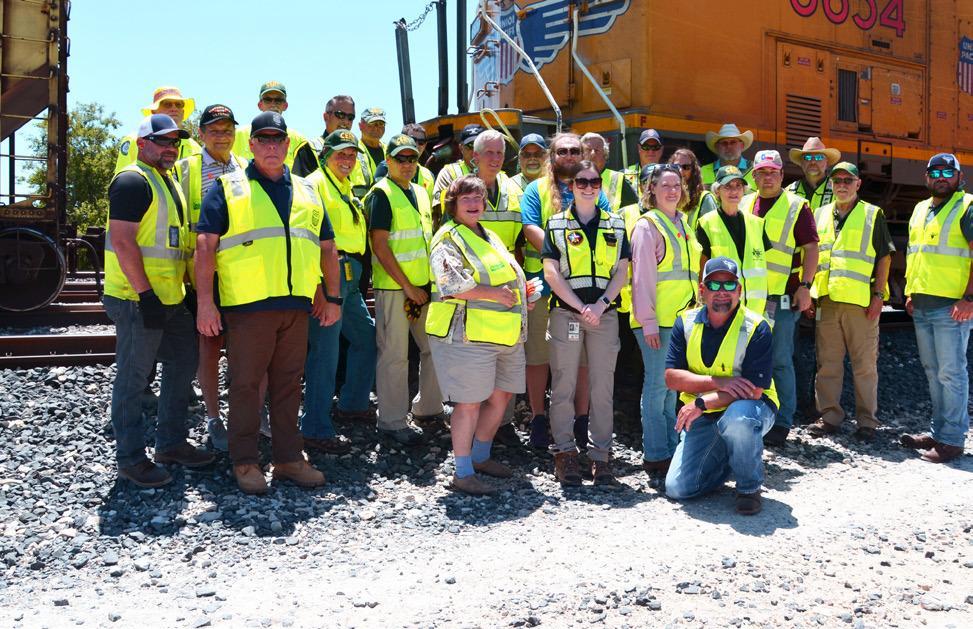
Above, Union Pacific Conductor Beau Beam describes how the piston brake functions on the locomotive. Left, top, Beam demonstrates track switching. Left, below, public safety personnel
from throughout
Central Texas participate in Operation Lifesaver, a course designed to teach railroad investigation techniques and safety measures. Below, Union Pacific Engineer Robert Hadley provides information about the workings of the locomotive including how communication is handled with Union Pacific in Omaha.
Daily Record photos by Barbara Audet
RAIL TO ROADS
Course outlines best practices for local railroad safety
Members of law enforcement, firefighting and emergency management staff, including a large continent of volunteers from the Community Emergency Response Team for Hays and Travis counties and the cities of San Marcos and Buda, recently participated in specialized public disaster preparedness training, with a focus on freight and passenger railroad safety and investigation in Texas.
Union Pacific Railroad, headquartered in Omaha, Nebraska, and Texas Operation Lifesaver on Tuesday, Aug. 8, hosted the one-day Railroad Investigation and Safety Course for a roomful of first responders. The course provided participants with a concentrated education on rail safety and enforcement, touching on aspects of railroad operations, motorist behavior and collision investigation techniques. These are vital to area investigators and law enforcement personnel in the event of a catastrophic accident or environmental crisis–raising the bar for public disaster preparedness in Central Texas.
Of particular importance during the course were the U.S. Department of Transportation’s Federal Railroad Administration guidelines. The FRA was created by Congress in 1966, and it oversees highway-rail grade crossings, for example, and what is known as the Emergency Notification System. ENS is currently characterized by prominent blue signs located at railroad crossings. This sign contains information that includes the name of the railroad, the emergency contact number and the USDOT National Crossing inventory number. The course emphasized this is one of the fastest ways for law enforcement to contact the railroad in the event of an emergency.
The course was made possible here by the grant writing expertise of Jessica Devorsky, executive director of Texas Operation Lifesaver, who said the program is a nonprofit public safety education and awareness organization. The program is dedicated to reducing collisions, fatalities and injuries, by “taking something theoretical like safety,” and seeing it transformed here in a practical way to make responses better and safer, Devorsky said.
Union Pacific System Public Safety Senior Supervisor Buck Russel said, “The whole course, Operation Lifesaver's Railroad Investigation and Safety Course (RISC), is designed to teach first responders, local law enforcement and EMS on railroad 101– what they are looking at is railroad terminology, how to properly respond to a railroad emergency, how to investigate one, how to clear the scene.” He added that the course also provides a framework for first responders to know how best to educate the community about no trespassing and why they should not go around railroad gates. Russel said he has been with Union Pacific for 26 years and has been safety supervisor for 12 of those, and is a resident of Helotes.
“I have a vested interest in my heart for these folks who keep us safe,” he said, watching as participants finished grading their written tests. He emphasized that first responders are dealing with driver impatience, distractions in a vehicle and excessive speed by motorists, all of which can contribute to highway-rail grade crossing collisions and train derailments.
Russel said they provide these courses as often as they can, and there is no cost to local municipalities.
“At Union Pacific, safety is always job one and having these safety eyes of the men and women of these communities who know how to communicate with us,” is paramount, he said.
The course, utilizes a combination of authorized volunteer speakers and expert instructors, was divided into two components, beginning with classroom instruction at the Hays County Public Safety Building and concluding with hands-on field exercises held at the Union Pacific facility off of Centerpoint Road. Here locomotive UP6654 rose dramatically above the ground in 103 degree heat, ready for Union Pacific safety team members, conductor Beau Beam and engineer Robert Hadley, to translate what the course presented on paper into a field-based reality. Climbing a ladder to get to the interior of the locomotive, participants had a view of the tracks few ever experience. Inside, the communications and operations of the locomotive were discussed with regard to how quickly accidents and community needs can be assessed for an immediate safety response.
Beam summed it precisely, saying that locomotives are designed with safety mechanisms that include piston brakes, headlight and auxiliary lights, the ever important bell and manual system features that can bring the train to a halt.











